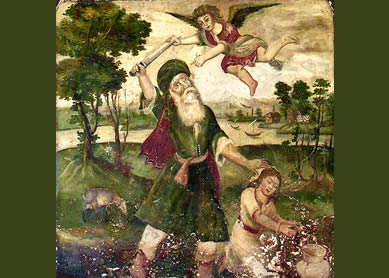Violence is found throughout the Hebrew Bible. It can occur at both individual and collective (groups of people and societies) levels. Contemporary readers, who may otherwise feel that it is easy to identify with the ancient Israelites, might attempt to relate these acts of violence to their own experiences. However, it is important to keep in mind that the violence portrayed in the Hebrew Bible is written from the perspective of the ancient Israelites (or later Jews) and reflects how they may have reacted to it. In contrast, postcolonial analysis has analyzed violence in the texts from the perspective of non-Israelites, and feminist analysis from that of women who generally did not write the texts. This provides us with a more nuanced understanding of violence in the Hebrew Bible.
In what ways does violence appear in the Hebrew Bible, and what is the role of people and God in that?
It is significant to be aware that the ancient Israelites in the Hebrew Bible saw themselves as a people who had a special relationship with their god whom they called Yahweh. Importantly, Yahweh also gave them instructions about how to behave at both individual and collective levels. Modern studies of societies have shown that they are kept together through a combination of influencing people’s thinking (ideologisation) and violence or the threat of it (coercion). To shape the thinking of the Israelites, authors included stories of their ancestors being liberated from Egypt and recorded legal instructions that told people how to act (esp. Exodus-Deuteronomy, including the Ten Commandments). They stipulated or threatened violence, for example, by injunctions to cut off individuals from the people (e.g.,
Not every violent act directly relates to the Mosaic legal system (see, e.g., actions in the book of Genesis). And, there are wrongdoings that may be punished outside the legal system (e.g., Amnon and Tamar,
A good amount of violence depicted in the Hebrew Bible can be deemed undeserved and sometimes even unexplainable (e.g., Jeremiah; Job; a number of psalms). Violence can also be associated with both individual and collective trauma, both implicitly and explicitly. This mostly really is the case when the ancient Israelites themselves have been targets of violence (e.g., the Babylonian exile,
Bibliography
- Pitkänen, Pekka. A Commentary on Numbers: Narrative, Ritual and Colonialism. London: Routledge, 2017.
- Brenner, Athalya, and Gale A. Yee, eds. Joshua and Judges. Texts@contexts. Minneapolis: Fortress, 2013.
- Pitkänen, Pekka. Joshua. Apollos Old Testament Commentary. Leicester: Inter-Varsity Press, 2010.





